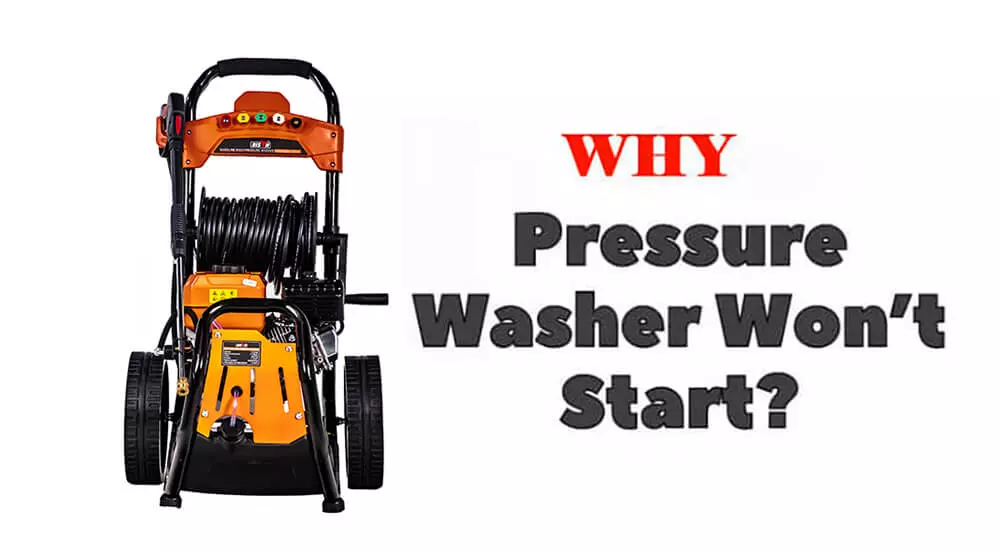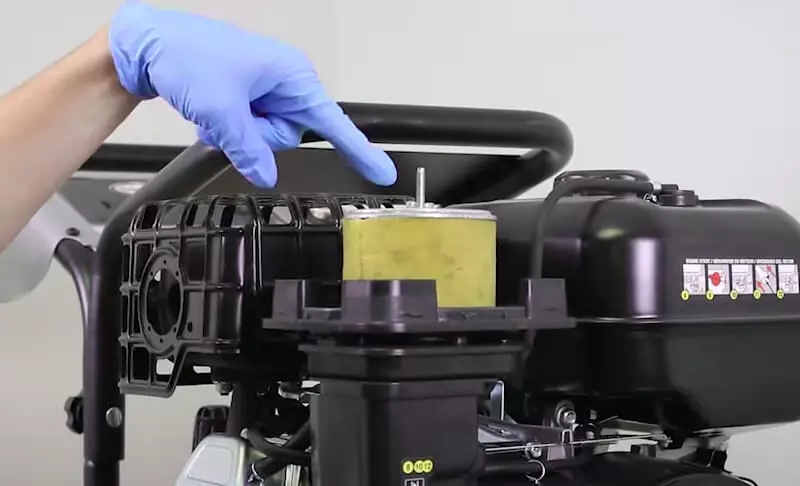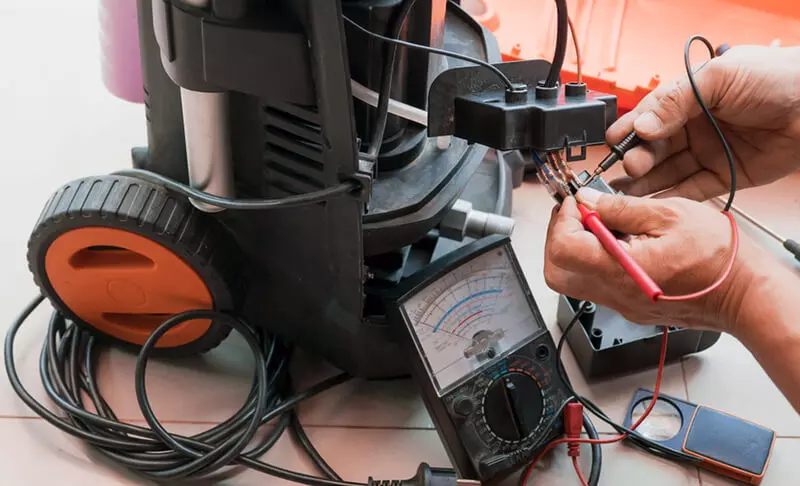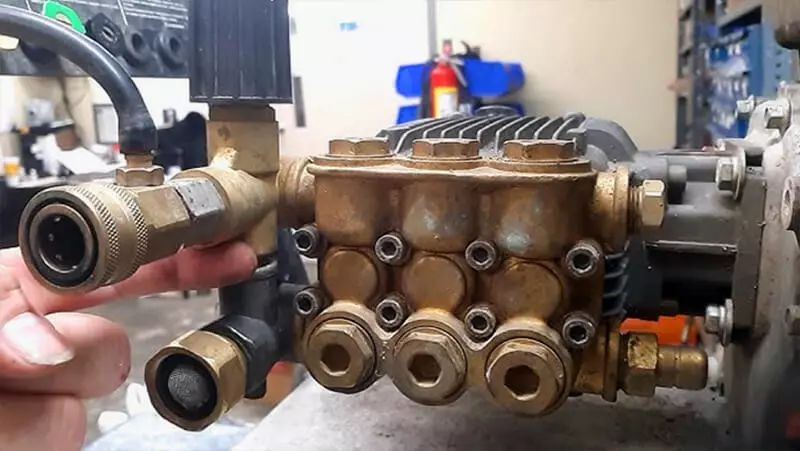10Aug 2024
table of contents

Pressure washers are vital tools for both homeowners and professionals, providing powerful cleaning solutions for different surfaces. These machines blast a powerful high pressure water, easily to remove tough stains, mold and dirt, keeping surfaces remain clean.
Despite pressure washer is rugged and efficiency, they can sometimes present challenges—fail to start. Knowing why your pressure washer fails to start is important. Whichh not only help saves time and effort but also helps prevent expensive repairs or the need for replacements.
In this article, BISON will talk common causes of pressure washer start issues. Each possible reason and its solution, from fuel or spark plugs, to more involved problems with carburetor or air filter. By this article, you'll possess both understanding and confidence to identify and fix these problems, making sure your pressure washer is operational quickly. Continue reading to discover how to maintain your pressure washer in peak condition and prevent future problems.
Common causes of pressure washer starting problems
Cause: Fuel breaks down and creates deposits over time, obstruct the fuel system, making it challenging for the engine to start.
Solution: Make sure have enough fresh gasoline in the tank. For bad fuel, empty old fuel in the tank and replace it with new gasoline. Adding fuel stabilizer can also help prevent this problem in the future.4
Cause: To much dust and debris can clog air filter, which can restrict airflow to engine.
Solution: Remove air filter and inspect it. If filter is dirty, wash it with soapy water and allow it to dry completely. And if air filter is badly clogged or damaged, you need to replace it.

Cause: Engine ignition may be hindered by worn or dirty spark plugs, and faulty ignition coils can disrupt spark.
Solution: Remove and inspect spark plug, clean dirty spark plugs with wire brush. Replace a new one if spark plug is worn or damaged.
Inspect ignition coils and substitute them if also they display any signs of damage or wear.
Cause: Carburetor is dirty or clogged may impede fuel flow and complicate starting.
Solution: Use carburetor cleaner to eliminate any accumulation. If you're uncertain about proper cleaning way, it's advisable to have it professionally checked. Should the issue continue, contemplate replacing carburetor.
Cause: A lot of pressure washers feature a low oil sensor, stops engine from starting when oil level is too low.
Solution: you need to check oil level with dipstick and refill as needed. Always adhere to oil type recommended by pressure washer manufacturer.
Cause: Flywheel key aligns flywheel with crankshaft. If flywheel key is damaged or cut, the timing will be affected and engine will not start.
Solution: Check flywheel key. Remove flywheel cover and inspect flywheel key for any signs of damage. Replace flywheel key. If flywheel key is damaged, just install a new one. This usually requires removing flywheel, so refer to your manual for detailed instructions.
Cause: For pressure washer with electric start, a dead or faulty battery can prevent engine from starting.
Solution: Check battery charge. Use a multimeter to check battery voltage, ensure that it conforms to values specified in the manual. Usual standard is 12 volts for most high pressure washers. If battery is low or exhausted, charge or replace it.
In the next, let us explore starting issues with electric pressure washers, ensuring you're equipped with all the necessary knowledge to maintain your cleaning equipment in optimal condition.

Cause: Pressure washer is not powered on.
Solution:
Verify power: Confirm that electrical outlet works by testing it with a different appliance.
Check power cord for any signs of damage: Look over pressure washer power cord for cuts, fraying or wear. If you find any problems, replace power cord.
Ensure correct use of an extension cord (if applicable): Utilizing a heavy duty extension cord capable of supporting electrical load. Overly long or thin may lead to a voltage drop, potentially hindering operation of pressure washer.
Cause: Like tripped circuit breaker or blown fuse of internal electrical issue, might stop an electric pressure washer from starting.
Solution:
Inspect fuse: Read manufacturer manual to locate fuse in your pressure washer and check if it has blown. If needed, replace it with a fuse that has same rating.
Check home's electrical panel: Circuit breakers can trip due to power surges or overloads, and reset it to recover.
Cause: Electric pressure washer are equipped with thermal sensors to prevent overheating. If motor overheats, it will shut down to cool down.
Solution:
Let motor cool down: Allow electric pressure washer to cool down for a while before trying to restart it. Make sure to situated in an good ventilation to prevent overheating.
Cause: With time, carbon brushes in the motor degrade, leading to poor power transmission. Key symptoms of this degradation are diminished power or total failure to initiate. You may also see sparks or hear grinding noises from motor.
Solution:
Motor brush replacement:
Unplug pressure washer
Consult owner's manual to locate and access motor brushes. Typically, this will involve removing some screws and covers.
Inspect brushes for wear. Brushes that are shorter than 1/4 inch require replacement. Carefully remove them.
Insert the new brushes into brush holder of motor.
Put all back together, ensure screws are securely tightened, and components are correctly aligned.
Reconnect power and test unit to confirm that it's functioning correctly.
In addition to the above reasons, whether it is a gasoline or electric pressure washer, you may also encounter following reasons:
Cause: A problem with the unloading valve may cause pump pressure to be too high, preventing pressure washer from starting. In addition, pump may not be properly filled with water before starting pressure washer, causing air pockets that hinder operation.
Solution:
Unloading valve failure: if checking unloading valve is clogged or damaged, thoroughly clean or replace it as needed.
Pump not filled with water: Make sure water source is turned on, prime pump according to manufacturer's instructions, and make sure pump is completely filled with water.

Cause: Overheating of fuel pump can cause air lock, which prevents pressure washer from starting.
Solution: Leave pressure washer in a cool place for a while to let fuel pump cool down. Make sure pressure washer is used in a well-ventilated area to prevent overheating. If problem persists, you may need to check whether fuel line or pump itself is blocked.
If you have tried basic troubleshooting steps and pressure washer still does not start. Or it involves complex electrical or fuel system problems that you are not familiar with. Some problems may be too complex or too risky to handle on your own and need to be handled by professionals to ensure safe and correct repairs.
By understanding and solving these common causes of pressure washer starting problems, BISON believes that you can usually solve problem quickly and effectively.
inquiry form here
BISON BLOG, All the latest news and views from Bison Machinery.
Related Articles
why does your pressure washer have surging or pulsing how to use soap on a pressure washer when to repair or replace pressure washer pump can you run a pressure washer without water why pressure washer won’t startRelated Products